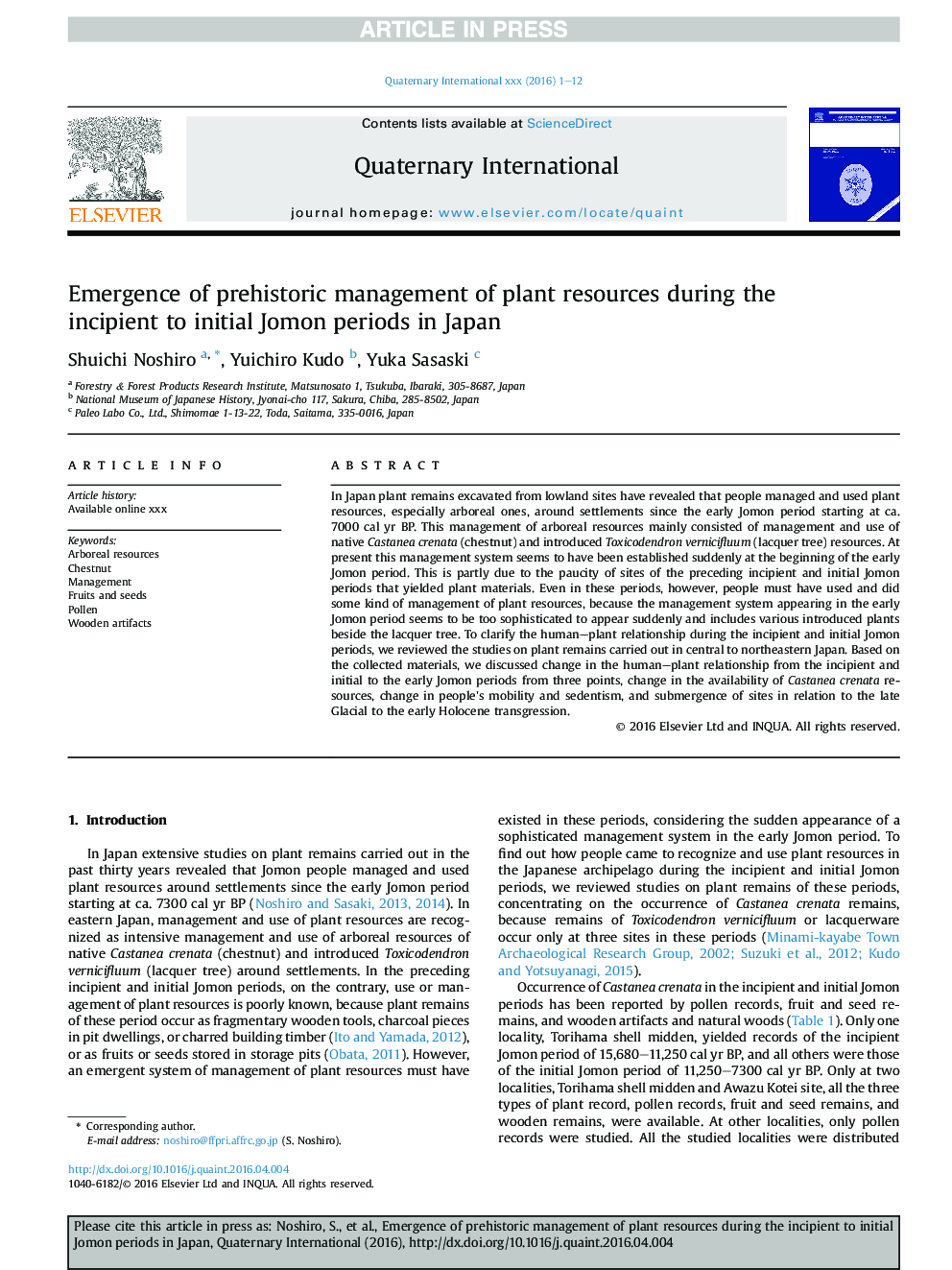| Article ID | Journal | Published Year | Pages | File Type |
|---|---|---|---|---|
| 5114120 | Quaternary International | 2016 | 12 Pages |
Abstract
In Japan plant remains excavated from lowland sites have revealed that people managed and used plant resources, especially arboreal ones, around settlements since the early Jomon period starting at ca. 7000 cal yr BP. This management of arboreal resources mainly consisted of management and use of native Castanea crenata (chestnut) and introduced Toxicodendron vernicifluum (lacquer tree) resources. At present this management system seems to have been established suddenly at the beginning of the early Jomon period. This is partly due to the paucity of sites of the preceding incipient and initial Jomon periods that yielded plant materials. Even in these periods, however, people must have used and did some kind of management of plant resources, because the management system appearing in the early Jomon period seems to be too sophisticated to appear suddenly and includes various introduced plants beside the lacquer tree. To clarify the human-plant relationship during the incipient and initial Jomon periods, we reviewed the studies on plant remains carried out in central to northeastern Japan. Based on the collected materials, we discussed change in the human-plant relationship from the incipient and initial to the early Jomon periods from three points, change in the availability of Castanea crenata resources, change in people's mobility and sedentism, and submergence of sites in relation to the late Glacial to the early Holocene transgression.
Keywords
Related Topics
Physical Sciences and Engineering
Earth and Planetary Sciences
Geology
Authors
Shuichi Noshiro, Yuichiro Kudo, Yuka Sasaski,
